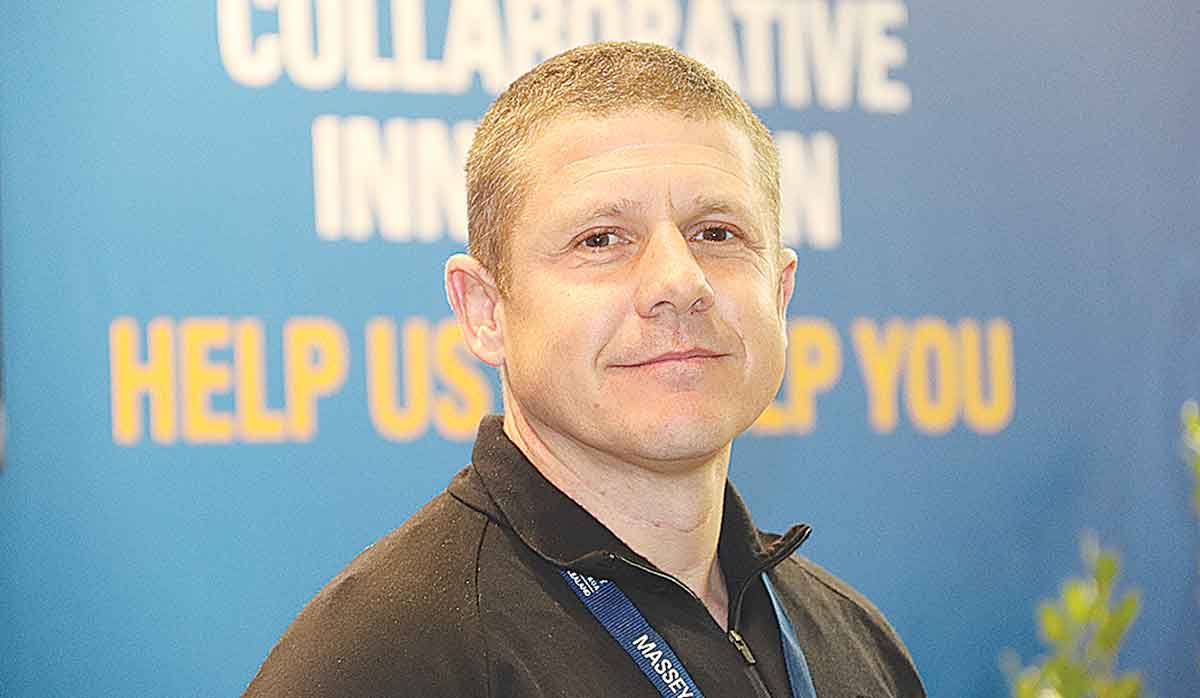Fonterra’s Pierre Venter named next vice chancellor of Massey University
The head of Fonterra's R&D facility in Palmerston North is set to literally cross the road and become the new vice chancellor at Massey University.
A new Massey University study will explore the potential for combined solar and pastoral farming in New Zealand by grazing sheep around solar panels on a Taranaki farm.
For New Zealand to reduce its carbon emissions, there needs to be an increase in the production of sustainable and renewable energy sources, and solar energy is one means to help achieve this.
Massey University, with funding from the Agricultural and Marketing Research and Development Trust (AGMARDT) aims to answer these questions on a solar farm in Taranaki.
The team, led by Professors Danny Donaghy and Paul Kenyon from Massey’s School of Agriculture and Environment, will measure pasture composition, growth and quality around and under solar arrays.
“Solar farming in conjunction with sheep grazing is an exciting mixed system allowing farmers to obtain two income streams while ensuring the land area is still productive,” Kenyon says.
The aim of the study is to provide data on pasture production and quality, which can then be used to model sheep carrying capacity or various sheep systems (i.e. a traditional ewe/lamb system – versus an all year round lamb finishing system).
Using this information, economic analysis can be undertaken to determine the income potential of both solar energy production and sheep productivity on a per hectare basis. It is envisaged that sheep are the likely animal of choice due to the potential for larger livestock to damage solar arrays.
“Due to the structure of the arrays, the amount of shading and light each area of land receives will differ each day and across seasons. Therefore, it is important that within a solar farm all these areas are measured across seasons to allow for a total picture of pasture production and therefore animal carrying capacity,” Kenyon explains.
There is also potential for shading, especially in the more humid periods of the year, to result in fungal growth and for potential health issues such as facial eczema to become an issue, so this will also be monitored.
 |
|---|
|
Professor Paul Kenyon |
The shading may result in species compositional changes, with the potential for weed species to become prevalent, and even dominant. This is also being monitored, as the level of weed species will impact pasture production as well as quality, both which have an influence on sheep carrying capacity and performance.
Initial results from the study will be available in a year’s time.
With the current situation in the European farm machinery market being described as difficult at best, it’s perhaps no surprise that the upcoming AgriSIMA 2026 agricultural machinery exhibition, scheduled for February 2026 at Paris-Nord Villepinte, has been cancelled.
The Meat Industry Association of New Zealand (MIA) has launched the first in-market activation of the refreshed Taste Pure Nature country-of-origin brand with an exclusive pop-up restaurant experience in Shanghai.
Jayna Wadsworth, daughter of the late New Zealand wicketkeeper Ken Wadsworth, has launched an auction of cricket memorabilia to raise funds for I Am Hope's youth mental health work.
As we move into the 2025/26 growing season, the Tractor and Machinery Association (TAMA) reports that the third quarter results for the year to date is showing that the stagnated tractor market of the last 18 months is showing signs of recovery.
DairyNZ chair Tracy Brown is urging dairy farmers to participate in the 2026 Levy vote, to be held early next year.
Beef + Lamb New Zealand (B+LNZ) is calling for nominations for director roles in the Eastern North Island and Southern South Island electoral districts.